Translate Blocks Using WPML (Multilingual)
WPML is a multilingual plugin that can help you create a multilingual Stackable website. In this guide, you’ll learn how to use WPML to automatically translate your website into as many languages as you want.
Setting Up WPML
To begin, start by installing and activating the WPML plugin. Once installed, complete the WPML Setup Wizard, where you can choose target languages, a URL format for translations, and provide context to help WPML create better translations.
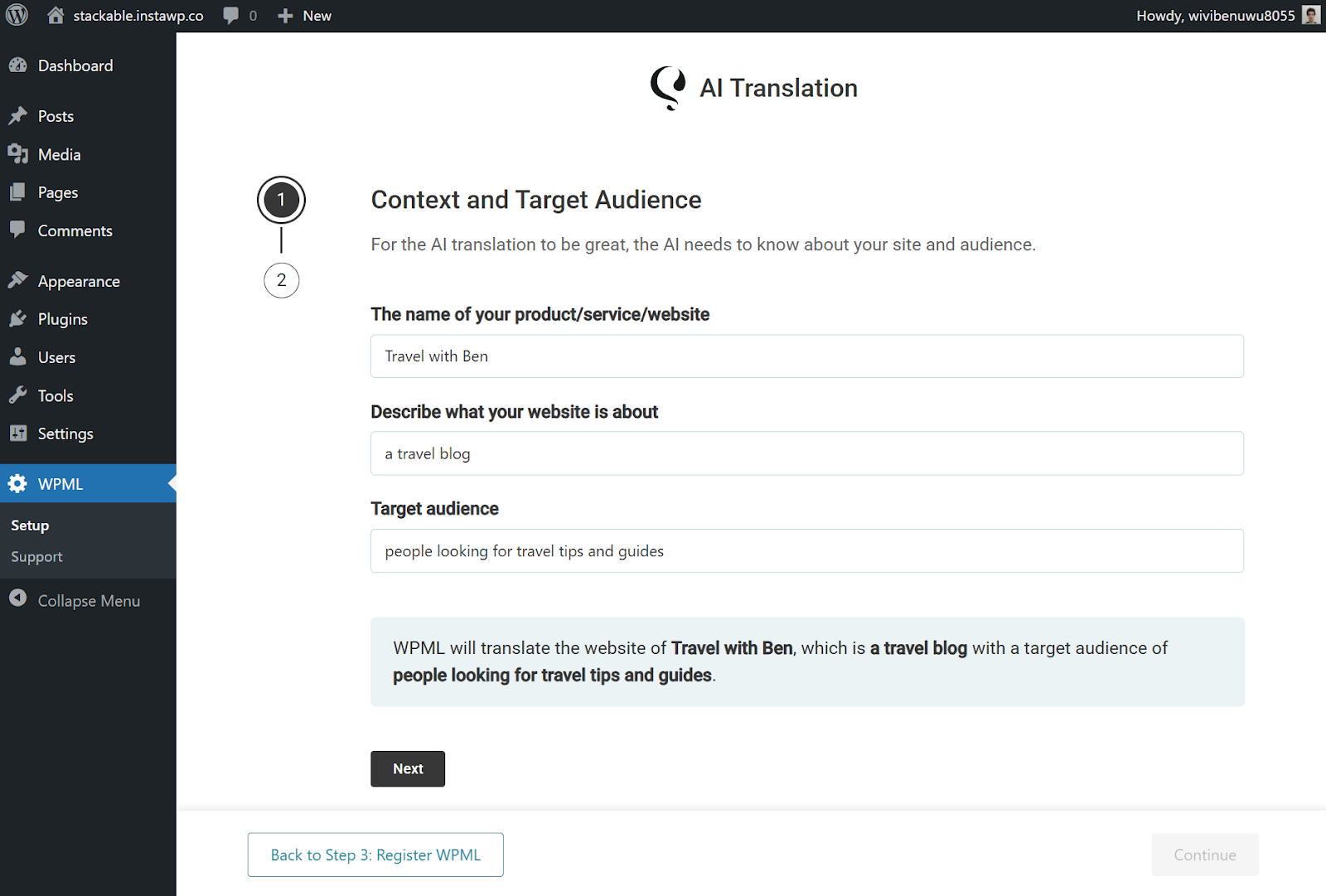
Providing context to WPML
How to Translate Stackable Blocks
To translate Stackable blocks, all you need to do is send the content containing your blocks for translation:
- Go to WPML → Translation Dashboard.
- Select the content with your blocks – we’ll select the homepage in this example.
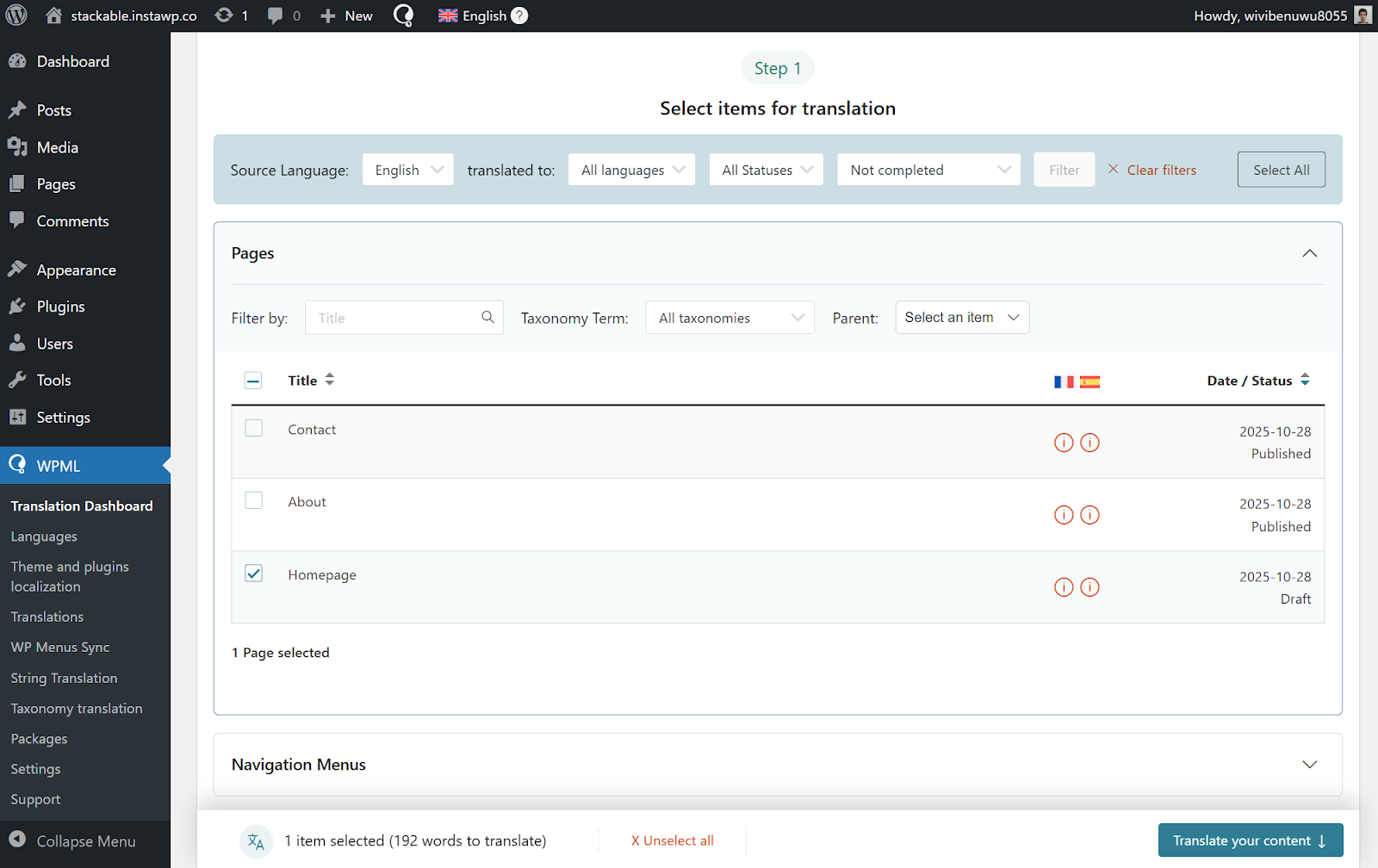
Selecting to translate the homepage
- Under Step 2, choose Translate automatically and set your engine to PTC – WPML’s own AI translator.
- Finally, choose a review option and click the translate button. PTC’s translations are highly accurate, so you can publish without reviewing translations.

Choosing translate automatically and PTC
- Once WPML is done, your translated content will appear on your website when switching languages.
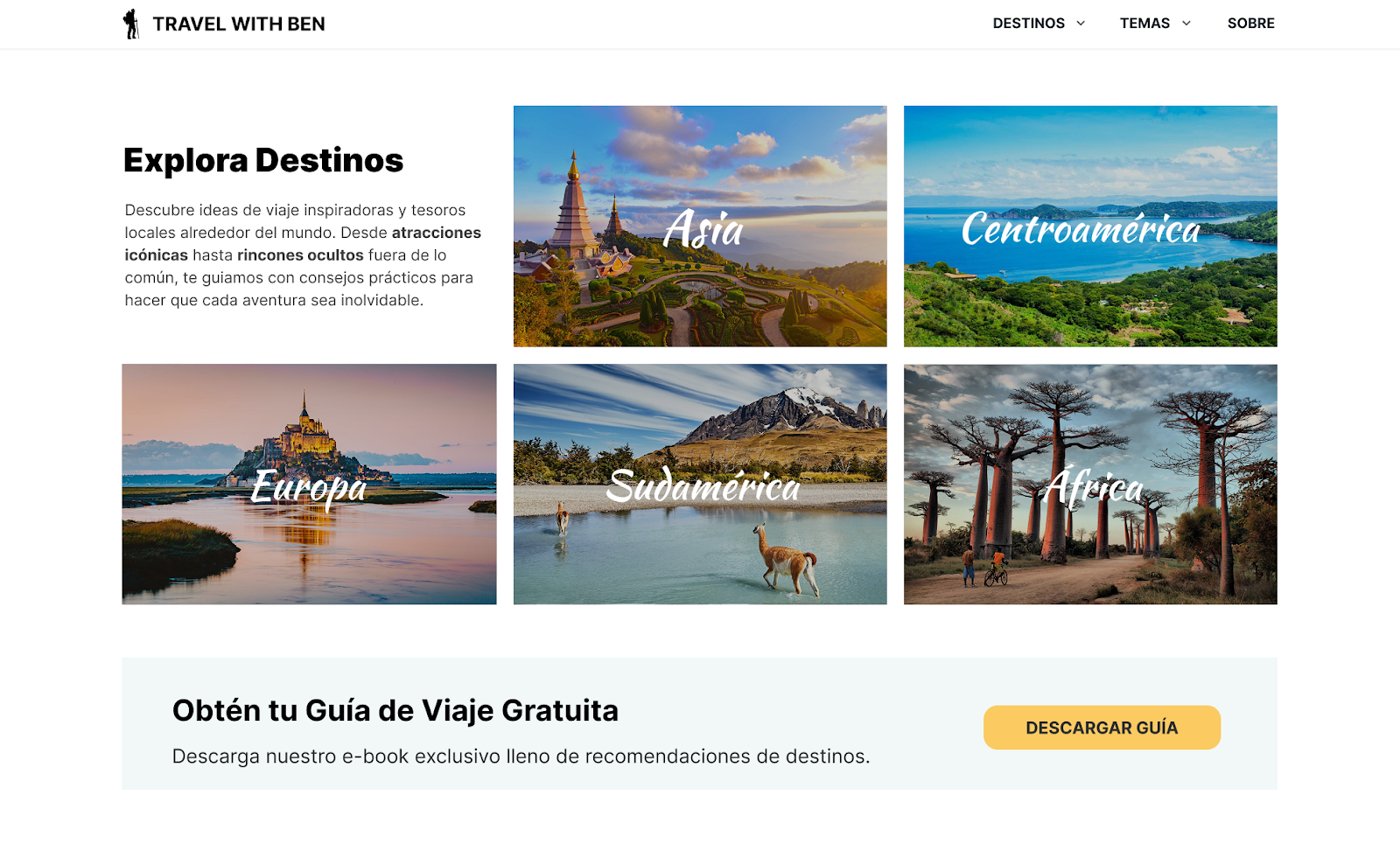
Homepage translated to Spanish
Translate Everything Automatically
Once you’re comfortable using WPML, you can translate your entire website automatically with one click. To do this, simply enable WPML’s Translate Everything Automatically feature at the top of Translation Dashboard.
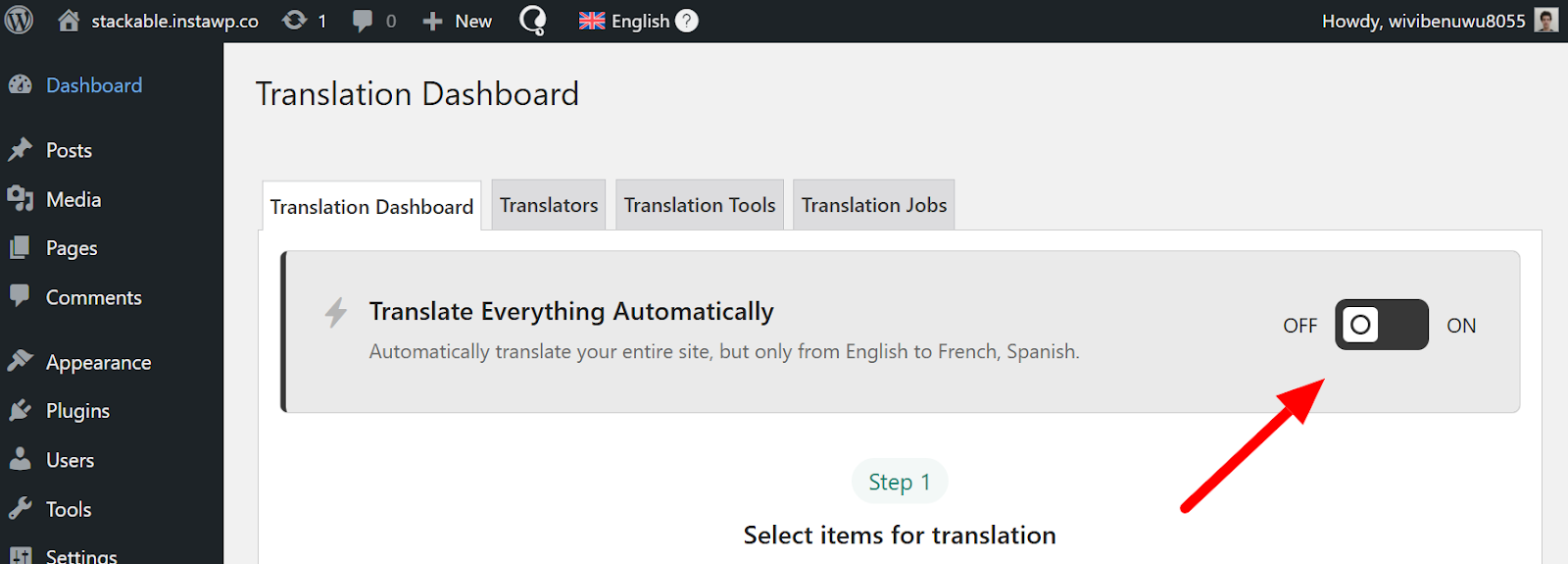
Enabling translate everything automatically
Once enabled, WPML will translate all your website content, and will automatically update translations whenever you edit the original content.
How to Edit Translations
To edit any translation on your website:
- Go to the translated page you want to edit.
- In the top admin bar, click the Edit translation button.
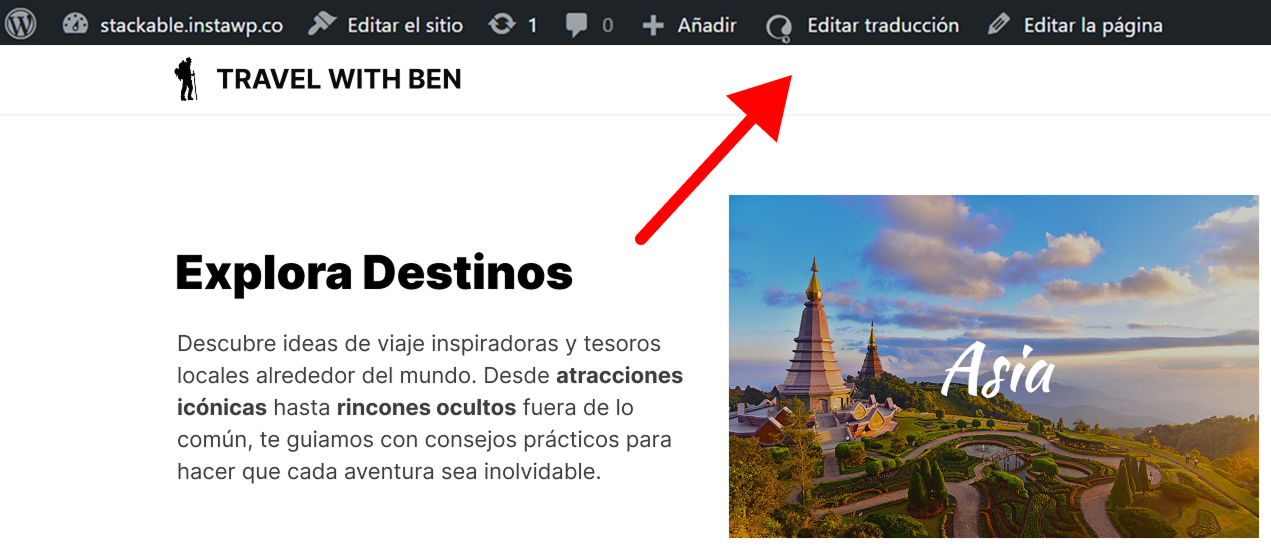
Edit translations button in admin bar
- In the editor that opens, click the translation you want to edit and make your changes.
- Finally, click the Save and Complete button.
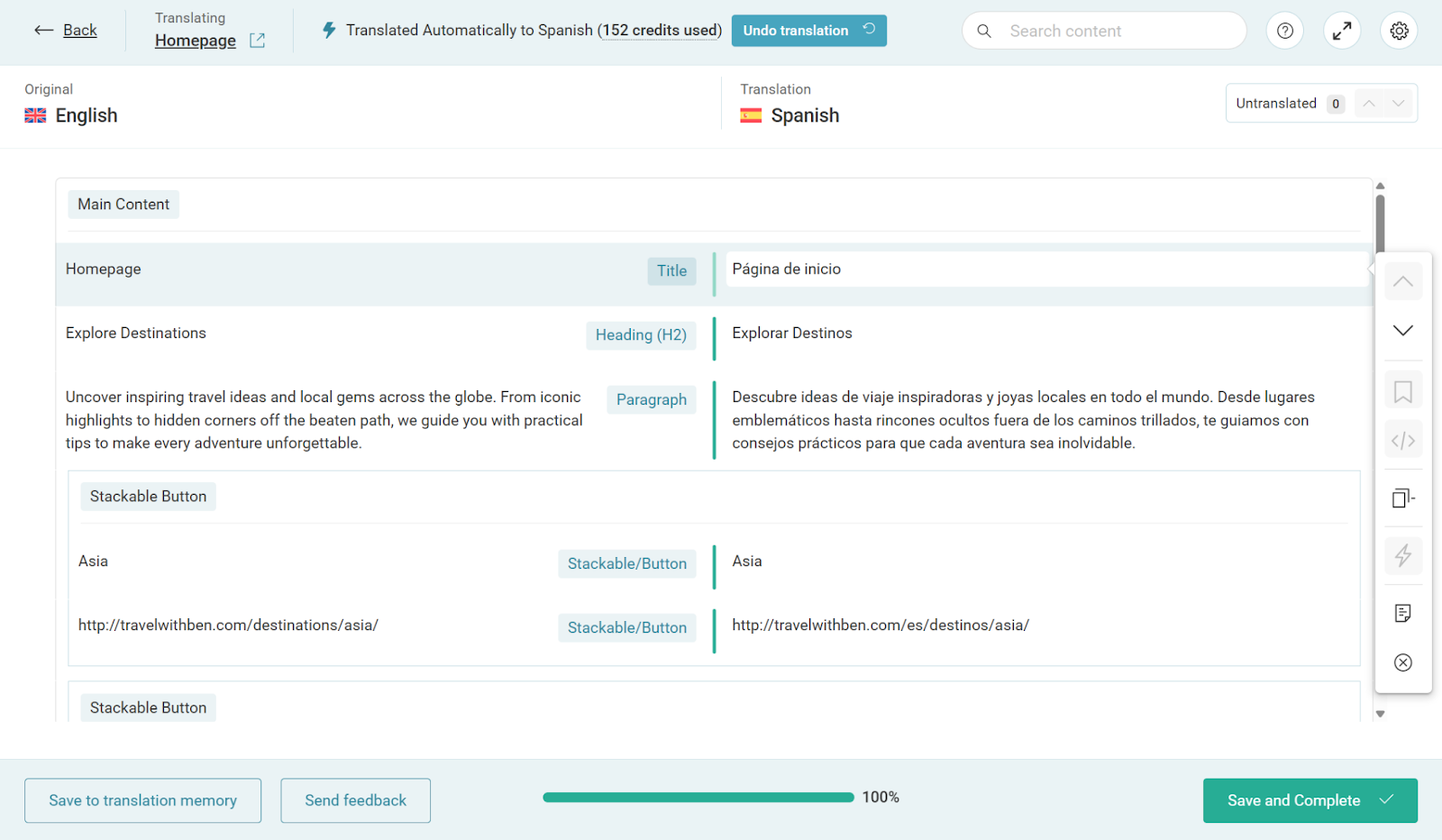
Editing translations in Spanish
Alternative Translation Methods
If you don’t want to use automatic translation, WPML offers three alternatives:
- Translate by yourself
- Translate with users of your site
- Translate with translation services
You can choose either of these options when sending content for translation.
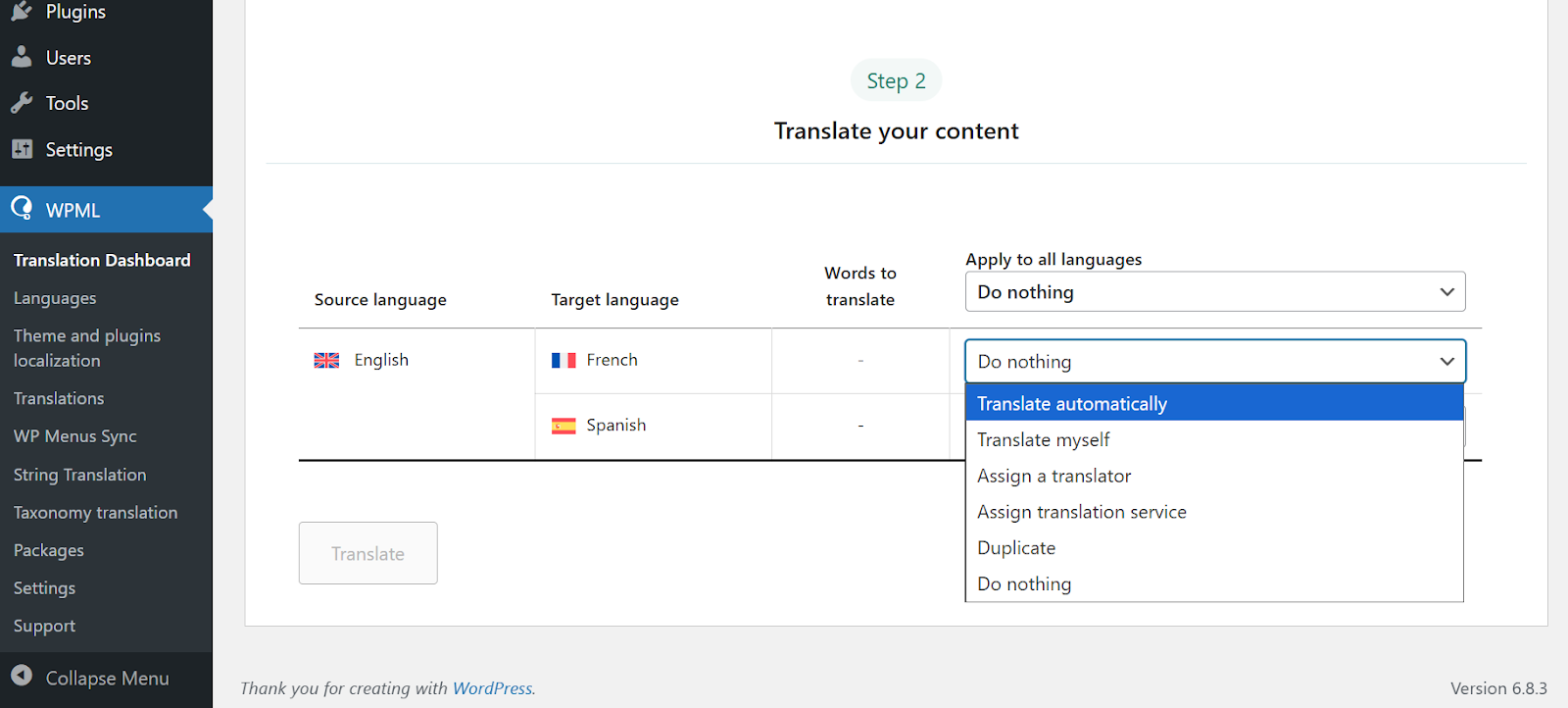
Alternative translation methods
Just keep in mind these alternative options may require additional setup; you need to assign the Translator role to let users translate on your website, and connect to a translation service to use 3rd party services.
Additional Resources
Looking for more info? Check out extra resources by WPML:
